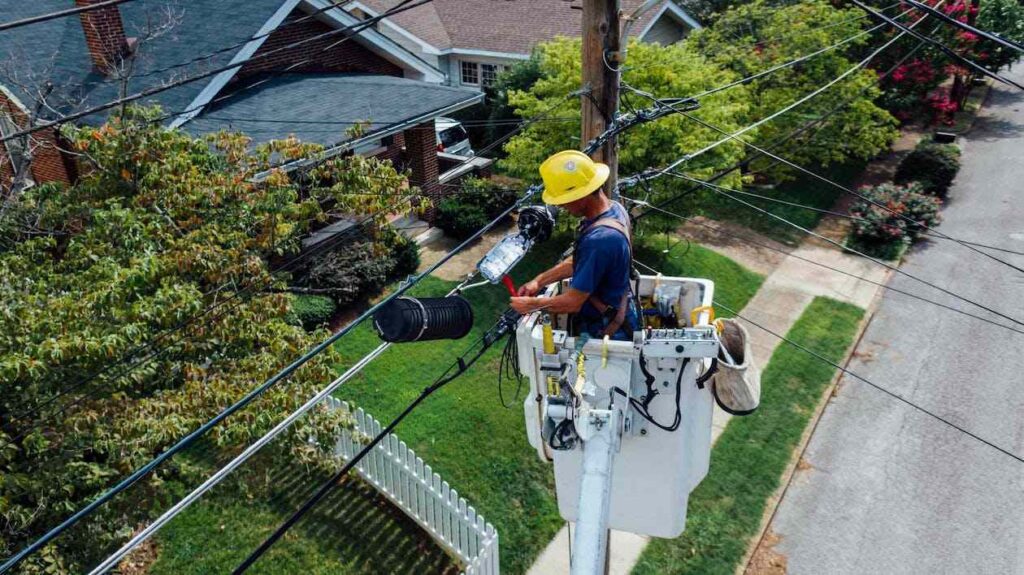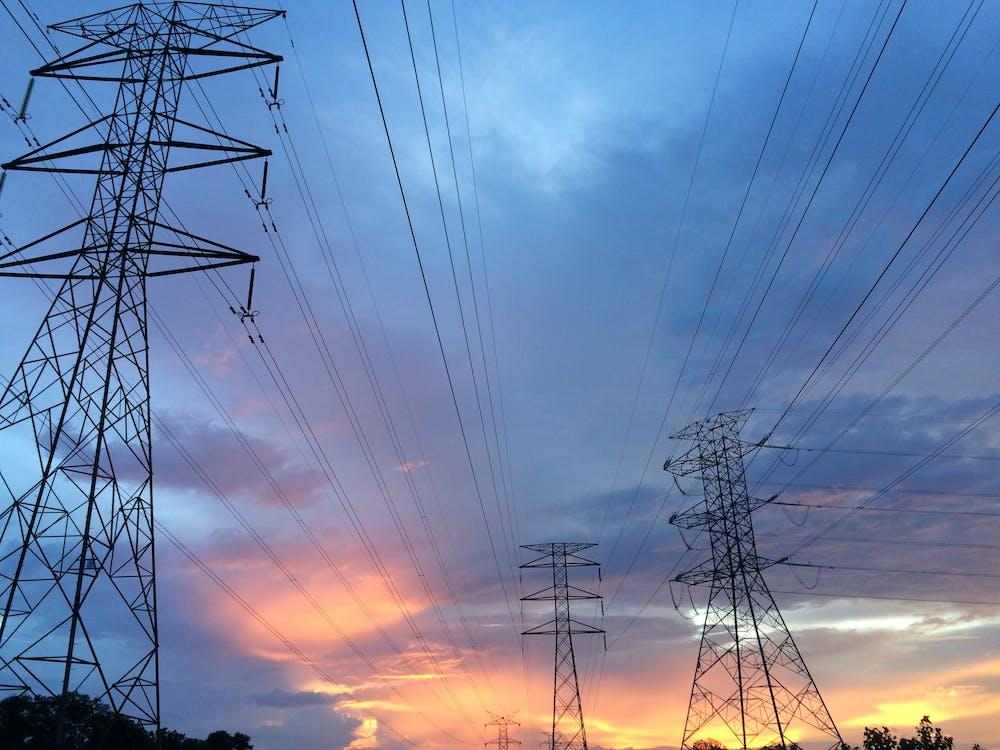
The Nordic area includes countries like Norway, Sweden, and Eastern Denmark, where the electricity grid is connected by alternating current. Specifically, there’s a 220 kV AC connection that’s currently present from Inari to Norway, while other systems are connected via direct current, such as the case in Estonia and Finland.
Primary sources of the Nordic power system can be a mixture of wind, nuclear, and hydropower because this region is home to many industries that use a lot of electricity for their operations. During the winter time, heating an entire home is what causes a huge increase in consumption, and the share is generally higher compared to the other regions of the EU.
Development of the electrical connections can be highly influenced by the weather, but renewable resources are there to help. Hydropower generation is part of the mix to get more benefits to the consumers.
Electricity markets may provide their customers with time windows for physical trading. These include the balancing, intra-day, and day-ahead markets, where the spot prices are determined a day before. Announcements are made before the 24 hours, and this can apply to those who have long-term contracts that subscribe to the fixed rates.
Different Power Regions in the Area
If there were no regions, the electric prices are going to be similar across the country, but fortunately, consumers are now given a choice. You can check strømsoner Norge to know more about the charges for each region. Divisions exist because access to electricity and production can be different, and power balances can result in deficits or surpluses. Transmission can occur when there’s too little or too much in other areas.
Norway has five where it’s divided into Eastern, Western, Northern, Southern, and Central regions, while Denmark has 2. Sweden also has 4, but Finland has passed a law that the charges should be the same throughout the country to prevent risking skewed distributions.
Selecting the Right Electrical Provider for Homeowners
Retailing began in the 19th century when entities began to generate their electricity for their consumption. These were then distributed to third parties so they could be used for trams and street lighting, but nowadays, this has become a large-scale operation.
In Norway, retailers play a crucial role in the market because they are intermediaries between you and the electricity generators. You can imagine them as the middlemen who can offer lower prices because they want to stand out from the competition. Since there are a lot of options out there, these companies are known to provide affordable electricity to the masses.
They start by making bulk purchases at wholesale prices and then package them into retail plans tailored for residential or commercial customers. Agreements may include pricing structures, contract terms, provisions, and additional services such as online account management or renewable energy options.
While retailers set their prices within certain regulatory limits, they don’t control the physical delivery of electricity. That responsibility lies with distribution network operators who manage power lines and infrastructure, but they can still let you know if there is going to be major maintenance so you can be prepared ahead of time.
The primary objectives of these smaller companies are to provide competitive pricing options to consumers while ensuring uninterrupted supply. They strive to meet demands by offering different plans based on consumption patterns, peak/off-peak hours, fixed rates vs. variable rates, etc., and these are all designed to fit various lifestyles and budgets.
Which are the Ones Right For You?

Customers may get confused if they were to choose between third-party suppliers and utility companies. The latter is often responsible for supplying energy to customers at default rates, and their primary duty is to provide reasonable contracts to different people.
Regulated states and countries don’t allow you to select a utility service provider, and you can’t formulate strategies to lower your bills each month. In essence, you’re going to be affected by the default rate set by a monopolized company, and this isn’t something that many people want.
Fortunately, there are deregulation policies where the governments are giving more options to their citizens by giving them multiple energy providers. You’ll have a plethora of choices not only with electricity but with natural gas as well.
Work with a consultant if you want to optimize your contracts and use various strategies that are tailored to your home or business consumption. Save money in the process and call the competing companies in the industry depending on which region you belong. Using a broker can also work where you can get more favourable fixed rates if these retailers want your business.
Factors to Consider When Choosing an Electricity Retailer
Remember that pricing options offered by different retailers can vary, so compare their rates and determine if they offer fixed or variable plans. Choose a package that aligns with your budget and energy consumption needs and get the maximum cost avoidance when possible. Be intelligent in your purchasing decisions and avoid long-term contracts with expensive termination fees.
Customer service reviews are a must because you would want to know the experience of other people whenever they are calling a certain company. These are the representatives where you can report outages, fire, or explosions if applicable so they can immediately send a team of electricians to fix the connection and prevent a conflagration.
Take into account any additional services or benefits offered by the retailer, since some may provide incentives for energy conservation or offer renewable energy options. If sustainability is important to you, finding a retailer that prioritizes green initiatives could be a deciding factor.
Comparison of Prices and Services Offered by Companies
Prices can vary for each region, but remember that you deserve to get all of the best deals and maximize your investment. Each of them has its plans and structure, so you’ll have a higher chance of getting a promotional offer, especially if you’re still new as a customer.
Services should also be on time, and the rates should be competitive. Those that may charge slightly higher rates but provide exceptional customer support and extra perks like access to geothermal energy, appliance calculators, and energy-saving resources should also be prioritized.
Effective comparison means looking beyond just the initial rate per kilowatt-hour. Consider any hidden fees or charges that could significantly impact your monthly bill, and check if there are discounted rates when you subscribe to their autopay programs or newsletters. Online app and account management will help keep track of your outstanding balances, due dates, and your usage, so it’s handy to have those.
Take advantage of comparison websites or tools provided by government agencies to simplify this process further, because these platforms allow you to input your details and preferences before generating a list of suitable electricity plans tailored specifically to your needs.
Customer Reviews and Satisfaction Ratings

Trust those who have already experienced the services provided by a particular retailer and get insights whenever possible. Read their in-depth reviews and see for yourself how the representatives are answering your questions. You need someone who’s responsive and who can give you the information that you need in the quickest possible manner.
Satisfaction ratings also play a crucial role in helping you make an informed decision, where you need to know more about billing accuracy, transparency in pricing plans, and ease of switching providers. Free consultations should also be available where they can recommend you upgrade all of your light fixtures to fluorescent or more efficient LED technology.
Pay attention to both positive and negative feedback from customers, you can gain insight into any potential issues or red flags that may arise when dealing with a certain electricity retailer. The best ones have a team that’s especially going to help you navigate the complex maze of fuel cell systems, microgrids, and other projects so you can make a more informed decision with these.
Remember that everyone’s experience may vary slightly due to individual circumstances. However, if there is an overwhelming number of negative reviews or consistently low satisfaction ratings for a particular retailer, it might be wise to proceed with caution.
Green Energy Options and Sustainability Efforts
As the world becomes more aware of the impact of fossil fuels on our environment, there is a growing demand for green energy options. Electricity retailers have recognized this need and are now offering sustainable energy solutions to their customers.
Sources like solar power or wind energy, are not only eco-friendly, but you can expect them to help you with the payables as well. These sources harness natural resources that are abundant and do not deplete over time, and by choosing a retailer that offers green energy options, you can contribute to reducing carbon emissions and supporting a cleaner future.
Another aspect to consider when evaluating the sustainability efforts of different retailers is their commitment to environmental policies and practices. Look for companies that prioritize renewable energy generation, invest in clean technologies, and have clear goals for reducing their carbon footprint.
Some also offer programs that allow customers to directly support renewable projects or offset their carbon emissions through initiatives like tree planting or investment in renewable infrastructure, so you better check them out.


